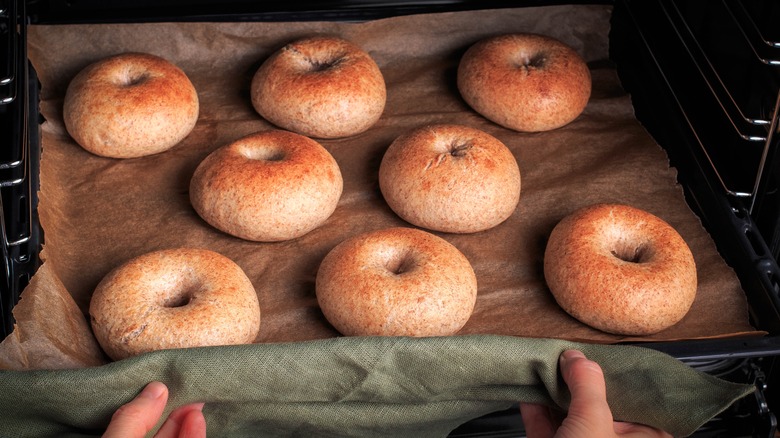Here's Why You Should Avoid Foods With L. Cysteine If You're Vegan
OG vegans know the drill: no meat, no dairy, no eggs. But what about other non-vegan ingredients with less obvious animal origins? From keratin to gelatin, processed (and therefore more difficult to discern) animal products find their way into otherwise cruelty-free foods and personal care products without raising any eyebrows. One of the most stealthy non-vegan ingredients around is L. Cysteine.
Chemically speaking, L. Cysteine is a semi-essential amino acid. Every living creature uses amino acids to create proteins. As a food additive, L. Cysteine helps baked goods stay fresher for longer, enhances the flavor of processed foods, and acts as a dough conditioner, according to the Vegetarian Resource Group. And although it can be microbe- or vegetable-derived, the overwhelming majority of L. Cysteine comes from duck or goose feathers, hooves, and swine bristles, notes Bakerpedia. This sneaky additive poses a problem for vegans who aim to eliminate any animal products from their diets.
L. Cysteine may be derived from human hair ... or not
When it comes to urban myths, the origin of L. Cysteine tops the list of food conspiracies. The Vegetarian Resource Group notes that in previous decades, the most common source of L. Cysteine was human hair collected from barbershops in China. The prestigious investigative journalism magazine Mother Jones confirmed this (gag-inducing) reality: In 2010, Sonya Sharp reported that at least one manufacturer, Twinlab, did indeed use human hair as the source of its L. Cysteine supplement.
Salon clippings can become a food additive through the magic of chemistry. Add human hair to a boiling pot of hydrochloric acid and activated charcoal, and the animo acid can easily be separated from the surrounding chemicals, according to Bakerpedia. L. Cysteine can also be extracted in much the same way from chicken, turkey, or duck feathers.
A 2018 study, however, finally put the human hair rumor to rest. Scientists developed a test to differentiate feathers from hair, and with a very low level of uncertainty, they determined that the majority of L. Cysteine does indeed come from poultry feathers. While that solves the possible cannibalism problem, it still doesn't guarantee that foods with L. Cysteine are safe for vegans.
Look for L. Cysteine in the bread aisle and processed foods
The place vegans most likely will encounter L. Cysteine is in commercial baked goods, according to Bakerpedia. That's because it acts as a dough conditioner, making the bread softer and more flexible as well as speeding up fermentation and mixing times. This applies to all kinds of flour-based products including bagels (via Cosmopolitan), buns, donuts (via The Guardian), cakes, pizza crusts, and pastries (via Natural News).
But L. Cysteine can also appear in other foods including packaged rices, dietary supplements like Emergen-C, and even Lunchables, notes Mother Jones. That's because L. Cysteine also acts as a flavor enhancer. And while some of these foods are relatively easy for vegans to avoid, if an otherwise vegan food lists L. Cysteine in the ingredients, it's next to impossible to know for sure the source of the animo acid.
If you're aiming for a cruelty-free lifestyle, check every label on the food you buy at the store and at restaurants. You never know just when L. Cysteine will spoil your perfectly plant-based meal.


